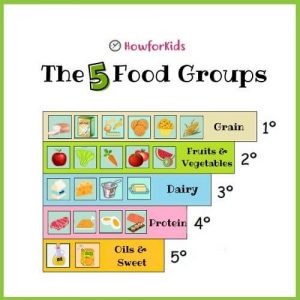Have you ever heard water referred to as H2O? Can you guess why someone might call water by this name?
Water is one of the most important substances on Earth. All plants and animals must have water to survive. If there was no water there would be no life on Earth.

How is Water made?
Table of Contents
Water is a basic molecule made up of two hydrogen atoms and one oxygen atom. When these three atoms come together, they form a strong bond that is difficult to break. Its chemical formula is H2O. The force of this bond holds a water molecule together for millions of years.
What is Water and Where did it Come From?
Water is a natural and abundant resource on the planet. It covers almost three-quarters of it, more than 70% of the Earth’s surface. Most water is salty and can be found in seas, lakes, rivers, lagoons, springs, cenotes, and waterfalls.
Not all water that exists on the planet is for human consumption. The water that is drunk and used in the preparation of food must be drinkable, that is to say, colorless, tasteless and odorless, free of microorganisms and with a low concentration of minerals.
Scientists believe that the amount of water on Earth does not change appreciably over time. In other words, the amount of water on Earth today is the same as it was in the age of the dinosaurs.
Origins of Water: Sources of Water
Have you ever wondered where water comes from?
If you live in a city or neighborhood, your water probably comes from a nearby river or lake. It is pumped to a water treatment center where it is cleaned to remove bacteria and chemicals to make it safe to drink. It is then brought to your home through underground pipelines. If you live on a farm or out in the country, this water is likely underground and comes from a well on your property.
What is the Water Cycle?
The water you drank this morning may have been the same water that once rained on a tyrannosaurus, froze a mammoth, flowed down the Nile to carry silt to an Egyptian farm, or filled Julius Caesar’s bathtub.
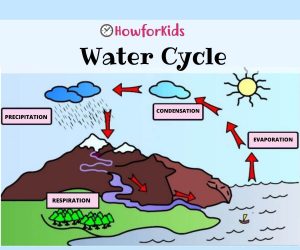
The water we use now is the same supply of water that has been on Earth for billions of years. Its quality is renewed over and over again by the natural cycle of water.
States of Water for children
Water can occur in three states forms: Solid (ice), liquid (water) or gas (vapor). They are the keys to the water cycle. This is how the system works:
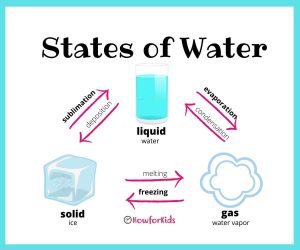
Water Cycle Explanation for Kids
Liquid water evaporates from the oceans, rivers and lakes and rises to the atmosphere (water in its gaseous state) where it condenses to form clouds. Then it rushes and falls to the earth in the form of rain (liquid water) or snow (solid water) where it flows into the oceans, rivers and lakes and the process begins again. The water cycle is often taught as a simple circular cycle of evaporation, condensation, and precipitation. Although this can be a useful model, the reality is much more complicated.
Water Cycle Diagram
Water is the most precious renewable resource on Earth. It defines our planet as a glowing blue sphere floating in the darkness of space. Life cannot exist without water. Humans cannot live for more than a few days without water.
- Although water covers 71% of the Earth’s surface, safe drinking water is limited.
- 97% of water is salty.
- Less than 1% is fresh water that flows in our rivers and lakes or is stored in groundwater and a fraction is found in the atmosphere.
- 2% of the Earth’s water is frozen in glaciers and ice caps.
Potable Water: Drinking Water
Potable water, also known as drinking water, comes from surface and ground sources and is treated to levels that meet state and federal standards for consumption.
Water from natural sources is treated for microorganisms, bacteria, toxic chemicals, viruses and fecal matter. Drinking raw, untreated water can cause gastrointestinal problems such as diarrhea, vomiting or fever.
There are maximum levels of pH, minerals, salts and microorganisms that distinguish drinking water from water that is not suitable for consumption. This means that potable water is low compared to large bodies of non-potable water, such as the sea or rain.
What is the Role of Water for Life

Why is Water Important for our Planet? Uses for Water
1. Water fulfills vital functions on the planet, whether in aquatic or terrestrial ecosystems.
2. It is a vital medium for the transport of nutrients in the body.
3. It is essential for the photosynthesis of plants.
4. It is the main input for daily hygiene.
What is the Function of Water in our Body
What does the body do with all that water? In the human body, water is the protagonist of a large number of processes:
- It is the vital medium for most of the body’s cells.
- It carries dissolved substances and makes up a huge percentage of blood.
- It facilitates the excretion of substances forming part of urine, feces, sweat and other excretions.
- It maintains body temperature.
- It provides electrolytes and minerals essential for the electrical functioning of the body.
- It moves like blood through your entire body. Most of your blood is made up of water. And it’s also in the lymph that travels through your body.
- Blood and lymph are the main ways that the body carries food and oxygen to your cells and help dispose of waste. This is a very important function of water! Blood and lymph also have special cells in them that fight infection, they are part of your immune system.
Importance of Water in the Body
All the things your body doesn’t need have to come out of it in some way. Some of that goes from the blood to the kidneys, making urine, which is mostly water. Some of it stays in your belly and comes out as feces, which is also mostly water! A part of it comes out in the air when you breathe. If you breathe on a cold mirror you will see small drops of water on the glass, this is water from your breath.
You also use water to keep your body temperature at 37 ° C (98.6 º F). The water comes out of the tiny holes in your skin called pores. We call this water perspiration or sweat and it helps keep our bodies cool.
Water is in the fluids that keep your joints moving smoothly (like your knees and elbows) so your bones don’t creak and growl like they’re rusty.
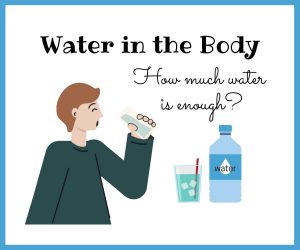
Saliva is made up mostly of water. We know when we need more water because our mouth feels dry.
Mucus is also mostly water. That’s the thing you see a lot about when you have a runny nose. But mucus is very important, it keeps your eyes, ears, noses, throats and everything inside you soft and sticky so everything can move through your body systems without getting stuck.
Now that you can see the great importance of water, you understand why your body needs so much of it.
The body of an adult needs about two liters of water per day (half a gallon) and smaller bodies a little less. If you are around 8 years old you may use 1 liter of water a day, so you have to replace that amount of water.
Easy Ways to Drink more Water
How to get enough water. You will get some water from food, such as fruits, meat, vegetables, but you will still have to drink water as well.
Reasons why Water is Important
You should drink about 6 glasses of water a day, more if the temperature is high and hot, if you have run a lot or if you feel thirsty. Of course, you can drink other liquids like milk and juice – they are mostly made up of water anyway.
Be careful with some fizzy drinks. These contain water, but some have large amounts of sugar (remember that you don’t need a lot of sugar).
Some beverages, like colas or coffee, contain caffeine. Look through the list of ingredients to see if it contains caffeine. Caffeine is a diuretic which means it will make your kidneys produce a lot more urine and you will have to go to the bathroom and lose all your water again!
Read also: The Basic Food Groups
How Much Water is Enough?
Since water is so important, you might ask if you are drinking enough. There is no magic amount of water that children need to drink every day. Children usually like to drink something along with meals and should definitely do so when they are thirsty. But when it’s warm outside or you’re exercising, you’ll need more. Make sure to drink extra water when you are outside in hot weather. Especially while playing sports or exercising.
When you drink water, it is also important that if you are going to play a sport, a game, or just exercising, drink water before, during, and afterwards. Don’t forget your water bottle! You will not be able to do your best if you are thinking about how thirsty you are.
Signs you Need to Drink more Water
When your body doesn’t have enough water, that’s called being dehydrated. Dehydration can prevent you from being as fast and accurate as you would like to be. A bad case of dehydration can make you sick. So keep that water bottle handy when the weather warms up. Water not only fights dehydration, but it is very refreshing and has no calories.
Signs of Dehydration
- Thirst
- Dry mouth
- Fatigue
- Headache
- Dry skin
- Fuzzy thinking
- Bad breath
- Palpitations
Your body keeps you hydrated by regulating the amount of water in your system. The body can retain water (when you don’t have enough) or get rid of it when you have too much. If your urine has ever been a very light yellow, your body may be discharging excess water. On the other hand, if your urine is very dark, your body is retaining water. It’s time to drink!
You can help your body by drinking fluids when you feel thirsty and by drinking extra water when you exercise or when it’s warm outside. Your body is capable of doing everything wonderfully, drink a lot of water and you will feel great.
Take care of Water
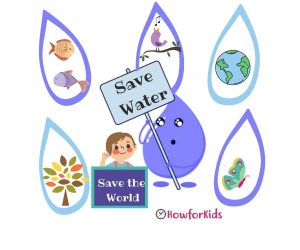
Fun Facts about Water
- 97% of the planet’s water is found in the oceans.
- 3% of this fresh water, 2.4% of this water is permanently frozen in glaciers and snow-capped peaks.
- Only half of 1% of the fresh water on earth is found underground and even less in our rivers and lakes.
- The amount of water there is today is the same as it has been on the planet since its creation.
- When we are born, water is 75% of our body weight.
- Water is 60% of the weight of adults and children.
- Seventy-five percent of a tree is made of water.
- Water is found in the vast majority of foods. For example, there is water in orange juice and milk, fruits and vegetables, even cheese.
- We use large amounts of water every day in our homes, for drinking, cooking, cleaning, washing, and gardening; It is estimated that we use approximately 250 liters (66 gallons) of water each day.
- About 30% of the total water, we use in our homes is for toilets. Modern dual toilets use approximately 4-6 liters per flush (1.6 gallons), older ones used up to 13 liters (3.4 gallons) of water.
- Water is the only substance that can be found in three states or forms: liquid (example: to drink) gas (example: when breathing) and solid (example: ice).
- Animals need water too. Every day a cow that produces milk for us drinks between 135 to 200 liters of water (34 to 52 gallons) – that’s a lot of fluid!
- Koalas are one of the only two creatures that do not drink water but get it from another source (in the case of the koala: eucalyptus leaves).
The Water Cycle for Kids
Water is continually moving around, through and above the Earth. It moves as water vapor, liquid water and ice. It is constantly changing its form. The movement of water is referred to as the hydrologic or water cycle. Precipitation, evaporation / transpiration and runoff (surface runoff and subsurface infiltration) are the primary phases in the cycle. The water cycle is also called the hydrologic cycle.
Water is vital for all living things. Animals drink water, while plants take water through their roots.
What is Water for kids: Summary of 10 Facts
- The water cycle is essential for life on our planet. Without the water cycle there would be no plants, no animals.
- The human body is made up of approximately 75% water.
- The water cycle is caused by the sun: heat causes the water to evaporate, before it cools, condenses and falls to the ground.
- Water can exist in three states liquid (water), solid (ice), or gas (water vapor).
- About two-thirds of the world’s water is found in the form of ice in the polar caps and glaciers.
- About 70% of the Earth is covered in water. An incredible 97% of the Earth’s water is in the oceans (this is salt water) and 2% is in the polar ice caps, leaving only 1% available for drinking.
- There are underground reservoirs of water called aquifers. Water can stay there for thousands of years.
- The water is recycled, that is, it does not leave the Earth. All the water that is currently on our planet is the same that has been there for millions of years.
- The Nile is 4132 miles long, making it the longest river in the world.
- The water is used to generate electricity through hydroelectric plants.
